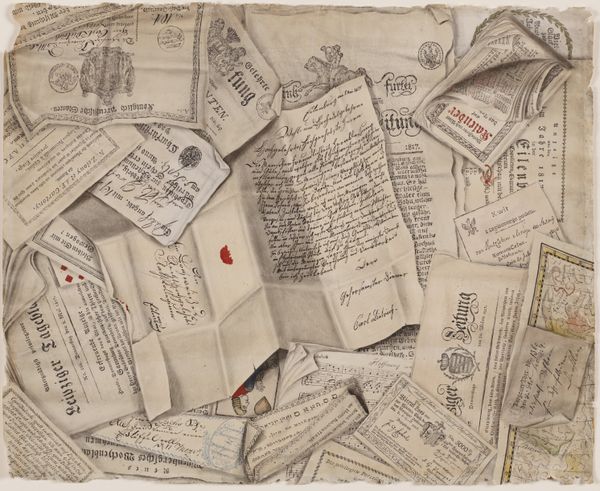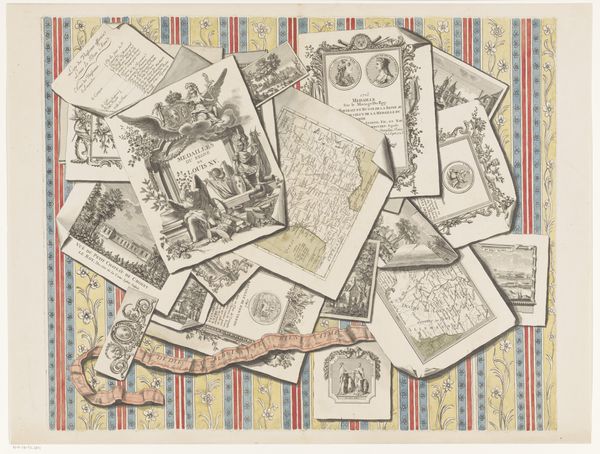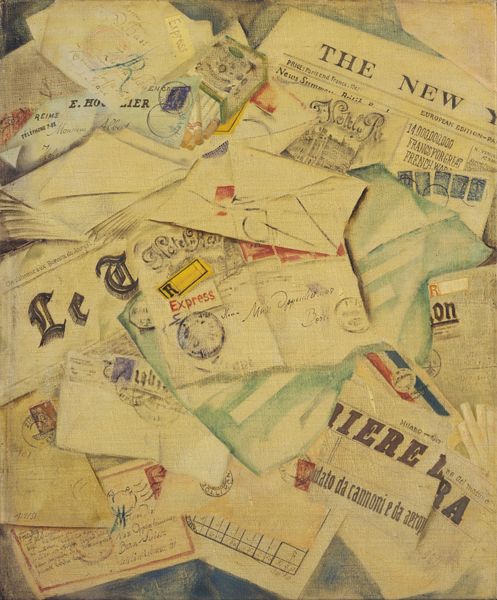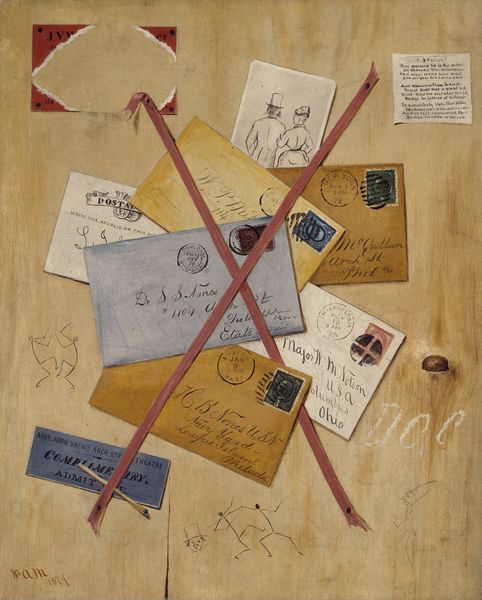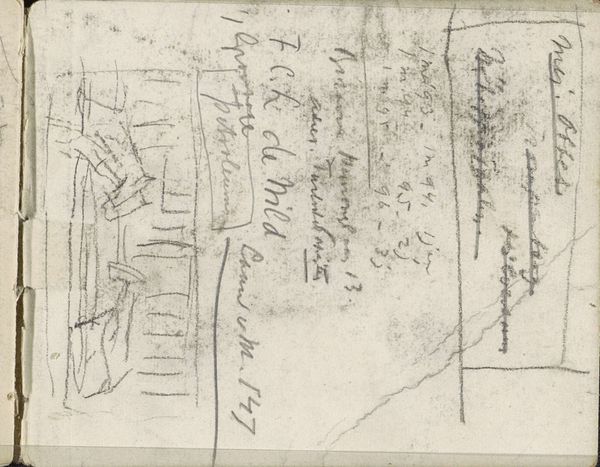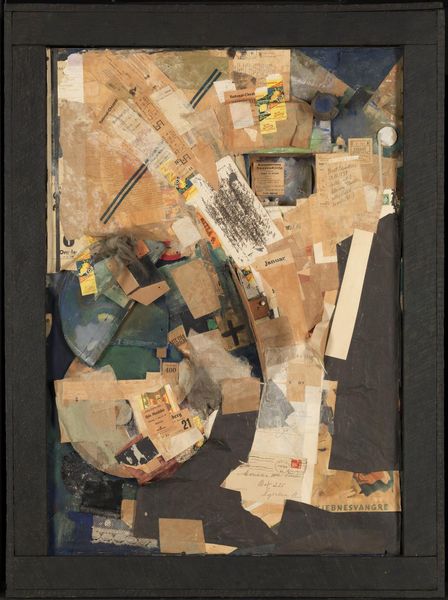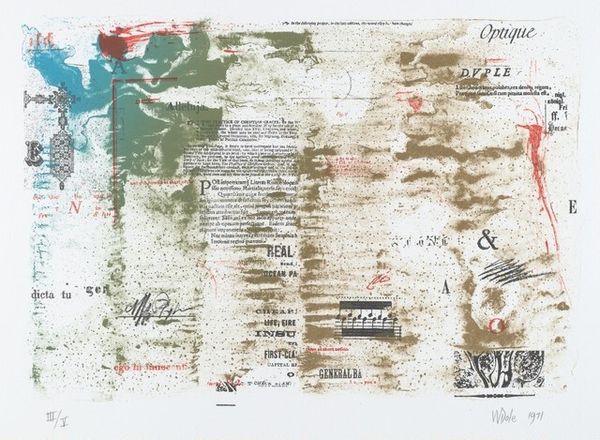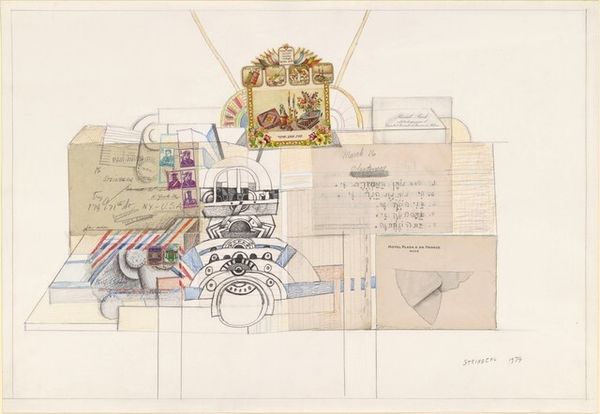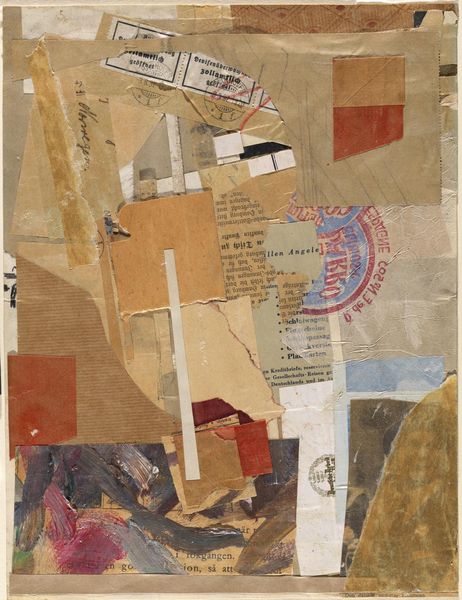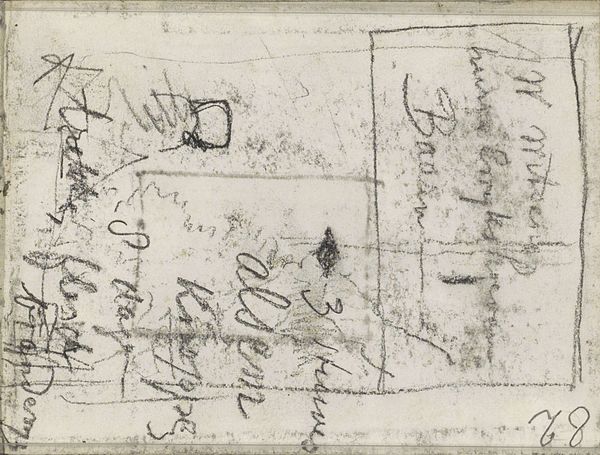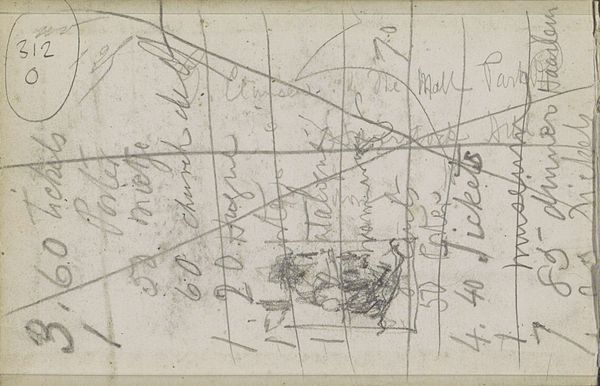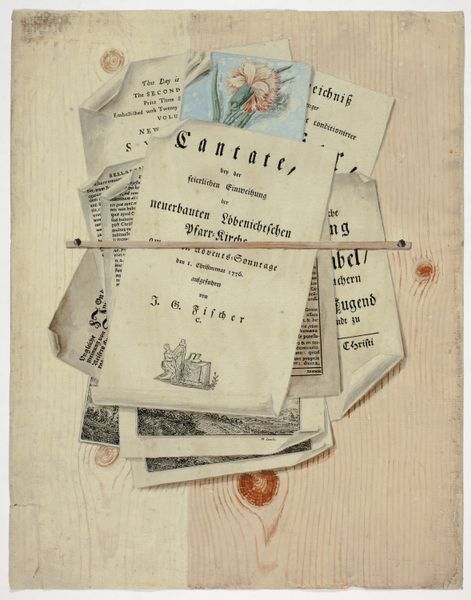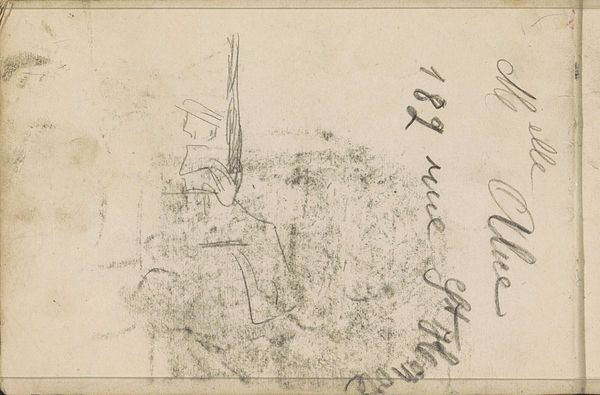
Trompe l'Oeil Design Including Bills, Calling Cards, an Etching, a Map etc. 1700 - 1800
0:00
0:00
drawing, print, watercolor
#
drawing
#
baroque
# print
#
watercolor
#
trompe-l'oeil
Dimensions: 13-3/16 x 12-5/8 in. (33.5 x 32.1 cm)
Copyright: Public Domain
Curator: This image, *Trompe l'Oeil Design Including Bills, Calling Cards, an Etching, a Map etc.*, created by an anonymous artist sometime between 1700 and 1800, employs watercolor and printmaking. It's currently housed at the Met. The layering effect really captures the eye, it feels almost sculptural despite being a 2D work. How do you respond to the materiality of this "trick of the eye?" Editor: It definitely draws you in! What’s most striking to me is the variety of papers represented, from the heavy stock of the map to the delicate surface of what looks like a calling card. How might these different materials be viewed in the historical context of production? Curator: Excellent question. Consider that the diverse papers showcased – from those used for commerce, mapping, correspondence and artistic reproduction - each possessed its own inherent value determined by production methods. The labor involved, the accessibility of resources – like specific fibers for high-quality papers versus more commonplace materials – and the social function each document served contributed to its worth. Do you think that by depicting these specific items, the artist might be making a statement on the evolving hierarchies of knowledge and value? Editor: That's fascinating! The inclusion of both seemingly mundane bills and more “intellectual” items like the map and etching… It disrupts any clear hierarchy, doesn’t it? Perhaps that equality hints at changing social values during the 18th century? Curator: Precisely. Consider that "trompe l'oeil", while seemingly about pure artistic skill, can be read as commentary on emerging capitalist societies, highlighting increased consumption and new forms of visual communication and marketing. The very act of mimicking everyday items raises questions about their place in society. Does the artist's playful subversion of surfaces push beyond a mere display of skill to expose deeper meaning? Editor: I never considered *trompe l’oeil* within a social context before; I always focused on its deceptive qualities. The level of detail that's gone into making these objects highlights how carefully the creator considered each piece’s importance. Curator: Yes! So, this piece isn't just about fooling the eye; it’s about asking us to examine what we value and how that value is constructed through material processes and social interaction.
Comments
No comments
Be the first to comment and join the conversation on the ultimate creative platform.
